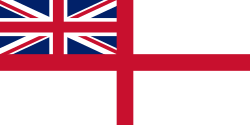| Office of the Judge of the High Court of Admiralty | |
|---|---|
 Ensign of the Royal Navy | |
| Judicial Department | |
| Reports to | First Lord of the Admiralty |
| Nominator | First Lord of the Admiralty |
| Appointer | Prime Minister Subject to formal approval by the Queen-in-Council |
| Term length | Not fixed |
| Inaugural holder | William Lacy, LL.B. |
| Formation | 1483-1875 |
The Judge of the High Court of Admiralty was established in 1483 he was the chief law officer of the High Court of Admiralty. The office holder was supported by various officials and existed until 1875. [1]